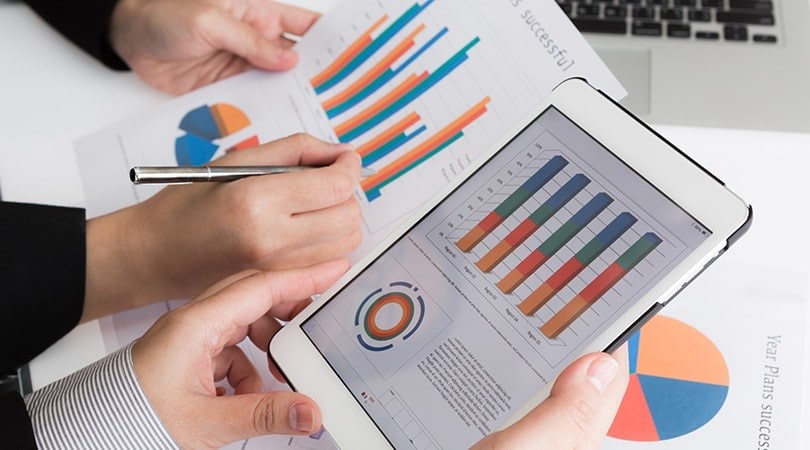When it comes to procurement, process improvements are key. Put simply; there is no such thing as the perfect procurement process. Instead, as you optimize your supply chain and manage supplier relationships, you will always find areas that can use a closer look and adjustments.
Find these areas that need improvement, and you can play a significant part in making sure your procurement efforts become more timely, effective, and efficient. Of course, if you’re mired in the day-to-day activities required of most procurement managers, it can be difficult to get there. To help you get started, here are procurement process improvements that will have a powerful impact.
10 Procurement Process Improvements
1) Centralize Your Information
First things first: procurement cannot be efficient if you collect information about the process in multiple places. If you don’t have a centralized process of information collection, from accounts payable to vendor information, it should be your first priority. Centralizing all information related to procurement helps you and your team more easily store relevant data, and access it when making crucial procurement decisions.
2) Build a Standard Procurement Policy
Standardization is just as important as centralization. The more established your procurement process, the easier it becomes to purchase materials and products for your company. Rather than having to customize each process depending on its unique features, you can follow an established set of steps designed to complete the purchase. Standardization leads itself to consistency when all team members are following the same set of policies and procedures.
3) Establish a Feedback System
Continuous procurement process improvements are key. Each purchase should be an opportunity to help you optimize your process, learn from mistakes, and build on successes. A system of feedback mechanisms can help you accomplish that goal. This system can include both informal surveys of both your internal and external stakeholders involved in the process and more standardized methods based on established KPIs. Through this feedback, you can improve your policies and processes over time.
4) Take a Close Look at Your Strategic Sourcing
Compared to the above, this is a bit of a long play. Still, strategic sourcing could be the key to success in your procurement process. You probably already use a generic version of this concept in your existing workflow; however, it might be time to make some improvements.
For instance, consider new and more extensive ways of giving your potential suppliers all the information they need to submit a bid. Standardize bids for easier evaluation, and be more open about the process itself. Use business intelligence to make more informed procurement decisions.
5) Invest in Professional Development
Whether you are your company’s only procurement agent or at the head of a team, professional development can provide immense value. In fact, one study found that 74 percent of our workforce don’t feel like they’re unlocking their full potential due to a lack of development. Develop your procurement team to empower them in making better decisions, using data to guide their work, and using new technology to automate the procurement process.
6) Establish a Supplier Directory
If you work with multiple suppliers, choosing the right one for an individual purchase can be complex. In that case, it makes sense to established a centralized supplier directory with all relevant information in a standardized format. This type of directory allows you to quickly determine which supplier might be right for an individual job, and also build better relationships across the supply chain over time.
7) Think Beyond Established Relationships
On the flip side of the above point, there comes a time when you can benefit from going beyond your current supplier list. In recent years, going global has become more cost-effective even for smaller businesses. Even as you build relationships with your suppliers, consider looking outside the box to find new options that might allow you to procure materials more quickly, cost-effectively, and reliably.
8) Embrace Lean Procurement Techniques
The lean philosophy has taken over business in the past decade, and procurement should be no exception. Adopting lean practices in your purchasing process can help you eliminate waste, saving valuable resources and time while still improving the quality of the purchase. The nuances of lean management in procurement go beyond the scope of this blog post, but they’re vital to understand when looking to make improvements to your process.
9) Open Yourself to Information Sharing
When it comes to optimizing your procurement efforts, information sharing is key. Both internal and external stakeholders should be in constant communication to make sure that everyone is on the same page regarding policies, expectations, and processes. Strategically share information with both suppliers and indirect stakeholders to improve the process and maximize your procurement opportunities.
10) Invest in Procurement Automation
Finally, but certainly not least importantly, take a close look at the software you use to manage the procurement process. Many of the workflows involved can be automated, which results in instant savings of time and resources. This type of automation also reduces the potential for human error and results in more consistency throughout the procure to pay cycle. CTOs across the spectrum expect automation to play a central role in the procurement process over the next few years.
You may also be interested in: 6 Results You Can Expect From Effective e-Sourcing Technology
To have an immediate impact on your procurement process, you need the right software platform. Procurement is complex, and your software solution should be able to account for its nuances. That’s where ProcurePort can help. Visit our website to learn more about ProcurePort’s e-sourcing software and how we’re helping companies like yours achieve their eProcurement objectives.










